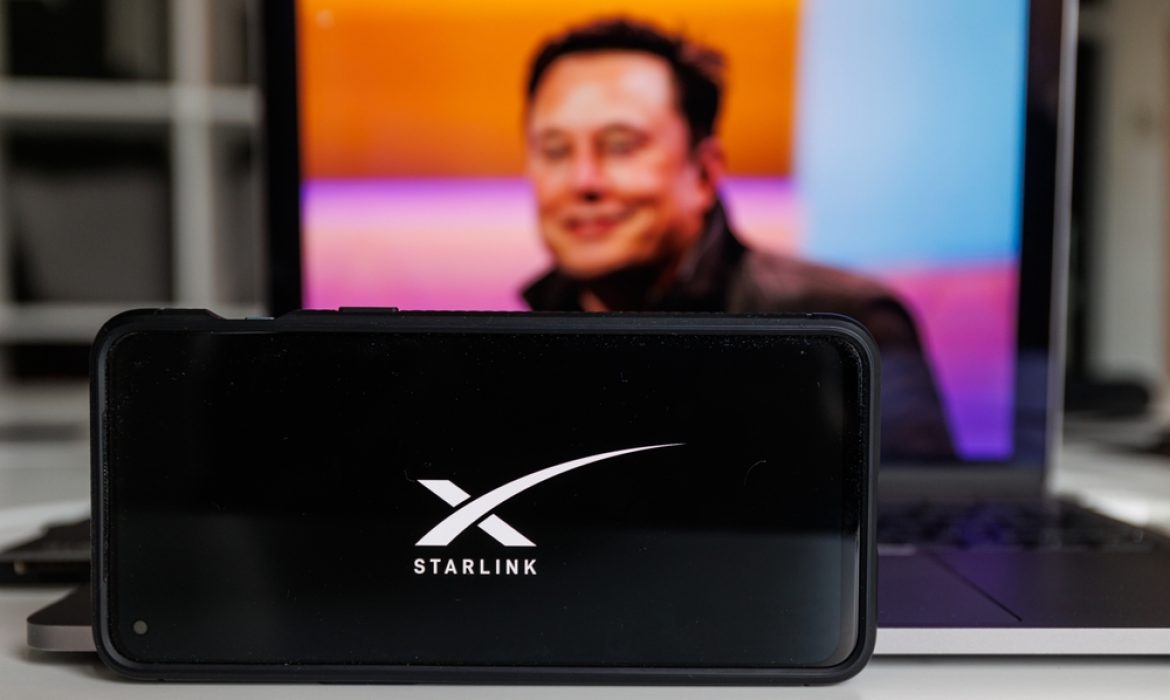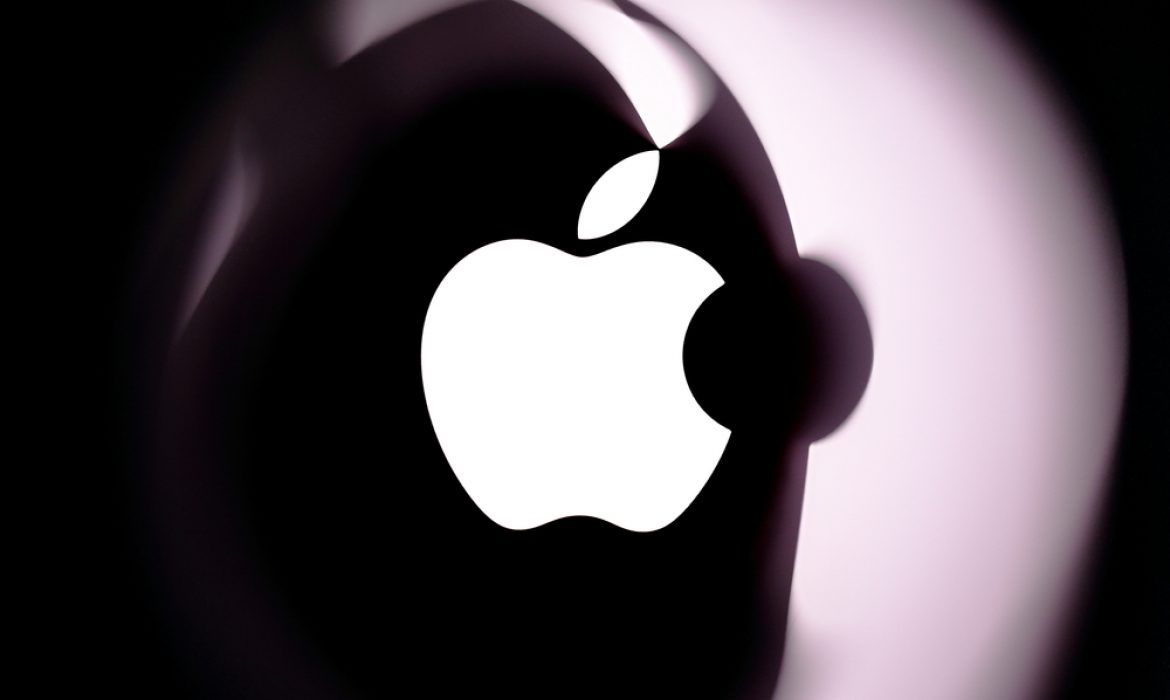Telegram provides a cryptocurrency wallet to 800 million users in a revolutionary move
In a groundbreaking move set to transform the landscape of digital communication and cryptocurrency, Telegram is gearing up to integrate a cryptocurrency wallet based on The Open Network (TON) for its colossal user base of over 800 million active users. This revolutionary wallet, aptly named TON Space, is slated to be globally accessible through Telegram settings starting November 2023.
This integration represents a significant leap for Telegram, which is already at the forefront of secure and private messaging services. TON Space will not only enhance the user experience but also usher in a new era of digital ownership and financial accessibility.
TON Space: A Game-Changing Wallet
TON Space is no ordinary cryptocurrency wallet; it’s set to become the foundational infrastructure of the entire TON ecosystem. Telegram’s decision to launch this feature speaks volumes about its commitment to enhancing user empowerment and financial freedom.
What makes TON Space even more compelling is Telegram’s promise to give priority access to TON projects and partners on its global advertising platform, Telegram Ads. This strategic move is a testament to Telegram’s dedication to promoting and fostering Web3 and Web2 partnerships on an unprecedented scale.
The Ideals Behind Telegram’s Move
At its core, Telegram has always championed the cause of freedom of speech and user autonomy. With TON Space, Telegram takes these principles to the next level by providing users with a powerful tool to manage their digital identity and assets seamlessly.
John Hyman, Telegram’s Chief Investment Officer, eloquently encapsulates the essence of this monumental partnership, stating that it places digital ownership squarely in the hands of Telegram’s vast user base. Simultaneously, TON projects will offer the necessary tools to engage with audiences, marking a monumental milestone in the fusion of Web3 and Web2 technologies.
This move not only showcases Telegram’s commitment to its user base but also reflects its ambition to create a more inclusive and empowering digital future. As the launch date draws near, the crypto community eagerly anticipates the transformative impact of TON Space and its implications for the world of digital communication and finance.
iOS 17: The Next Evolution in iPhone Innovation
Apple, always at the forefront of innovation, unveiled its highly-anticipated iOS 17 at this year’s Worldwide Developers Conference. This major update brings a slew of exciting features and improvements to iPhone users worldwide. While the launch of the Vision Pro mixed reality headset garnered much attention, iOS 17 is poised to redefine the iPhone experience.
USB-C Charging: The End of an Era
One of the most significant changes in iOS 17 is the shift from Apple’s proprietary Lightning charging cable to USB-C for the new iPhone 15 models. This change marks the end of an 11-year history with the Lightning cable, signaling a move towards a more universal charging standard.
Live Voicemail and Enhanced FaceTime
iOS 17 introduces Live Voicemail, a feature that transcribes a caller’s message in real-time. This empowers users to decide whether to take a call or let it go to voicemail while the caller is still leaving their message. Additionally, unknown numbers can be sent directly to voicemail if the “Silence Unknown Callers” setting is enabled.
FaceTime receives a facelift as well, allowing users to leave video messages if the recipient doesn’t answer a video call. Expressiveness is taken up a notch with new features like heart reactions, balloons, fireworks, and more, adding fun and creativity to your video conversations.
“Hey Siri” Becomes Simply “Siri”
In a bid to make interactions with Siri feel more natural, iOS 17 drops the “Hey” from the activation phrase. Now, you can simply say “Siri” to get your assistant’s attention. Siri also gets better at handling follow-up requests after activation, streamlining interactions.
NameDrop and Contact Poster: Simplifying Connections
iOS 17 introduces NameDrop, a feature that makes sharing contact information a breeze. Users can bring their iPhones close together, akin to AirDrop, to exchange contact details with newfound acquaintances. The Contact Poster update allows you to set a custom image as your caller ID photo, offering a more personalized calling experience.
Enhanced Autocorrect: No More “Ducking” Around
Autocorrect receives a comprehensive overhaul with iOS 17. Apple incorporates a cutting-edge machine learning language model, improving text input support and offering sentence-level autocorrection. Predictive in-line text recommendations make typing smoother, letting you add entire words or sentences with a simple tap of the spacebar. The keyboard becomes smarter over time, learning your typing habits and even adapting to intentionally typed words like “duck.”
StandBy Mode, Journal App, and More
iOS 17 introduces StandBy, a full-screen mode that displays information from a distance when your iPhone is charging on its side. This feature allows personalization with clocks, favorite photos, or frequently used widgets.
Additionally, the Journal app offers a digital space for users to capture thoughts, notes, and ideas seamlessly.
In conclusion, iOS 17 ushers in a new era of iPhone capabilities and user experiences. From enhanced voice assistants to simplified contact sharing and improved autocorrect, Apple continues to push the boundaries of what’s possible in mobile technology. iOS 17 promises to make your iPhone more intuitive, expressive, and personalized than ever before.
The US Recorded Music Industry Thrives: H1 2023 Insights
In the dynamic world of music, the numbers often sing their own tune. The Recording Industry Association of America (RIAA) recently released its Mid-Year 2023 Report, and the figures are like a chart-topping hit. In the first six months of 2023, the US recorded music industry orchestrated an impressive $8.4 billion in gross revenues.
This headline-worthy statistic, representing money spent on streaming subscriptions, physical and digital music, signifies a thriving industry. Year on year, recorded music revenues in the US on a retail basis surged by 9.3%, illustrating the music’s undying allure.
Digging deeper into the financial score, on a wholesale basis, which reflects the money that ultimately reaches record labels, distributors, and artists, the industry generated a substantial $5.3 billion in H1 2023. Compared to the previous year, this marks an 8.3% increase.
The report’s full details are available here, but let’s harmonize these numbers: streaming played a leading role in this crescendo of revenues. Services encompassing paid subscriptions, ad-supported platforms, digital and customized radio, social media, and digital fitness apps contributed significantly to this financial symphony. Notably, streaming revenues soared by 10.3% year on year, swelling to a whopping $7 billion in H1 2023, accounting for 84% of the total recorded music earnings in the US.
It’s essential to note that the pace of growth in music streaming accelerated compared to the previous year, with total streaming revenues escalating by $600 million YoY, a testament to the enduring popularity of streamed music.
Peering further into the streaming realm, revenues from paid subscription services stole the spotlight, ascending by 11% YoY to $5.5 billion in H1 2023. This category encompasses both full-premium and ‘limited-tier’ subscriptions. These subscriptions held sway over nearly two-thirds of the industry’s total earnings and over three-quarters of total streaming revenues.
However, within the realm of streaming, there’s a tale of two subcategories. While revenues from subscription-based streaming flourished, ad-supported music streaming services experienced more muted growth, with a modest 0.6% YoY increase, amassing $870 million in H1. The message is clear: consumers increasingly prefer premium, ad-free listening experiences.
Delving into subscription numbers, the report reveals that although the number of paid subscriptions to on-demand music services grew in H1 2023, the pace of growth was more relaxed than in previous years. During the first six months of the year, an average of 95.8 million subscriptions was recorded, marking a 5.8 million YoY increase compared to 90 million in H1 2022. Notably, this figure excludes ‘limited-tier’ services, counting multi-user plans as a single subscription.
Analyzing this trend over the years reveals a deceleration in growth, suggesting that the US might be approaching a saturation point for streaming subscriptions, given its status as the world’s largest recorded music market.
This development emphasizes the importance of recurring price increases, a strategy championed by various industry leaders, as slowing subscription growth may become the norm.
It’s not all digital, though. Physical music formats, including vinyl LPs and CDs, recorded revenues of $882 million in H1 2023, marking a 5% YoY increase. Within this segment, vinyl records, a beloved format for audiophiles, notched up 1% YoY growth, reaching $632.4 million, representing 72% of physical format revenues. However, it’s noteworthy that despite the modest revenue increase, fewer vinyl records were sold in H1 2023 compared to H1 2022, suggesting that vinyl prices may be on the rise.
RIAA’s Chairman & CEO, Mitch Glazier, summed up the report’s findings eloquently: “This report describes a thriving, growing music ecosystem that continues to reach new heights and shape our culture. And it reflects the creative human genius and hard work of all the artists, songwriters, labels, publishers, and services who make the music happen and meet fans and audiences where they are in today’s forward-looking and innovative music community.”
In a rapidly evolving industry, these numbers are not just figures; they are the heartbeat of an ever-evolving musical landscape.
Global Oil Markets Face Supply Shortfall: IEA Warns of Price Volatility
IEA Warns of Oil Price Volatility as Saudi Arabia and Russia Extend Production Cuts
In a recent announcement, the International Energy Agency (IEA) has issued a stark warning that the current production cuts implemented by oil giants Saudi Arabia and Russia could trigger a significant supply shortfall, leading to renewed turbulence in oil prices. This alert comes at a time when global oil markets are already grappling with complex dynamics and mounting pressures.
Deficit Looms Over Global Oil Markets
The IEA’s report projects a substantial oil supply deficit of approximately 1.2 million barrels per day for the second half of 2023. This forecast is a direct consequence of the recent decision by the OPEC+ alliance to extend their production cuts until the end of this year. While this deficit is somewhat smaller than previously anticipated, due to historical shifts in demand patterns, it remains a cause for concern, especially for consumers worldwide.
Depleted Inventories and Vulnerable Prices
Even in the scenario where Saudi Arabia and Russia decide to ease their production curbs in early 2024, the IEA warns that global oil inventories will be severely depleted. This depletion of reserves leaves oil prices vulnerable to sudden and unpredictable shocks, potentially leading to increased price volatility. Recent developments have already seen Brent futures surge to a 10-month high, crossing the $92 per barrel mark.
Tightening Market Dynamics
“The market is really tightening in the second half of the year,” notes Toril Bosoni, the head of the IEA’s oil market division. August data revealed a substantial drop of 75 million barrels in global oil inventories, highlighting the growing imbalance in supply and demand.
OPEC+ Data Indicates Significant Shortfall
While OPEC+ member countries often justify their production cuts as necessary for market stability, their own data suggests a more significant supply shortfall in the coming quarter, estimated at over 3 million barrels per day. This is the most substantial shortfall seen in at least a decade, yet the OPEC+ coalition has provided limited insight into the reasoning behind their current strategy.
Potential Political Ramifications
This situation could potentially hold political implications, particularly for President Joe Biden, who is preparing for a reelection campaign amid concerns over high inflation and soaring gasoline prices, hovering close to $4 a gallon. The IEA is also keeping a watchful eye on the impact of elevated oil prices on the global economy and the pace of monetary easing.
Challenges to the Status Quo
The IEA’s report takes a more direct and explicit stance on the Saudi-Russia partnership than in the past, focusing on the energy disruption and inflationary pressures stemming from Moscow’s conflict in Ukraine. The IEA characterizes the Saudi-Russian alliance as a “formidable challenge” for oil markets, with the extension of production cuts likely leading to a substantial market deficit through the fourth quarter of the year.
A Transition Away from Fossil Fuels
This ongoing tension between the IEA and oil-producing nations reflects broader shifts in the energy landscape. IEA Executive Director Fatih Birol recently suggested that global oil demand may reach its peak in this decade as consumers increasingly turn to renewable energy sources to combat climate change. This transition marks what could be the beginning of the end for the fossil fuel era.
Global Demand and Economic Impacts
Despite these transformations, the IEA continues to estimate that global oil consumption reached a record high in June, with projections indicating an annual high of 101.8 million barrels per day this year, representing an increase of 2.2 million barrels per day. Notably, China is expected to drive 75% of this growth.
However, this growth is anticipated to taper off in 2024, aligning with weaker global economic expansion and a reduced reliance on oil as a primary transport fuel. The IEA’s outlook underscores the complex web of factors at play in the global energy landscape, where geopolitics, climate considerations, and economic realities intersect, leaving both producers and consumers to navigate a challenging and evolving terrain.
Apple’s MagSafe Returns in iPhone 15: The Future of Wireless Charging
In a much-anticipated event known as “Wonderlust,” Apple took the tech world by storm with the unveiling of its latest innovations, including the iPhone 15, iPhone 15 Plus, and the Apple Watch Series 9. These new devices come packed with exciting features and improvements that are sure to delight Apple enthusiasts worldwide.
iPhone 15 Series: Abandoning the Past
One of the most significant and groundbreaking changes in the iPhone 15 series is the abandonment of Apple’s proprietary Lightning interface in favor of the universally accepted USB-C connector. This shift means that a single cable can now be used to charge not only iPhones but also laptops, tablets, other smartphones, and even Apple headphones. This move towards standardization is expected to make life more convenient for Apple users.
The iPhone 15 series also marks the end of the “notch” era, replacing it with the Dynamic Island feature, previously exclusive to Pro models. Dynamic Island offers a fresh way to view notifications and interact with applications, enhancing the user experience.
Revolutionary Camera Upgrades
Apple has not spared any effort in enhancing the camera capabilities of the iPhone 15 series. The primary camera now boasts an impressive 48-megapixel sensor, a significant upgrade from the 12-megapixel module found in the iPhone 14. In low-light conditions, four neighboring pixels are cleverly combined into one large pixel, resulting in 12-megapixel photos that retain exceptional clarity.
Portrait mode, which is now automatically activated, offers more control over focus adjustments even after a photo is taken, allowing users to fine-tune the image according to their preferences. Night mode, Live Photos, and Action mode have all undergone improvements, making the iPhone 15 series a photography powerhouse.
Selfie enthusiasts will also be thrilled with the introduction of autofocus and portrait lighting for the front camera.
Stunning Display and Performance
The iPhone 15 features an OLED Super Retina display with support for Dolby Vision and a dazzling 1600 nits of brightness. The display’s peak brightness soars to an astonishing 2000 nits when in bright sunlight, double that of the iPhone 14. Available in 6.1 and 6.7-inch diagonal sizes, these displays promise immersive and vibrant visuals.
Under the hood, the iPhone 15 series is powered by the A16 BIONIC chip, the same chip featured in last year’s iPhone 14 Pro models. Apple is confident that this chip will provide ample processing power to meet the demands of users.
Battery life receives a boost, with Apple claiming that the iPhone 15 “will last a whole day without charging” thanks to an enlarged battery capacity. Moreover, a second-generation ultra-wideband chip enhances connectivity with other devices and significantly improves the accuracy of Find My searches.
Additional Features and Pricing
The iPhone 15 series incorporates MagSafe support, a satellite communication system for emergencies when outside cellular range, and a noise reduction system for voice calls. Users can choose from a variety of colors, including pink, yellow, green, blue, and black.
The iPhone 15 is priced at $799 for the 128GB version, while the iPhone 15 Plus model with the same memory configuration is available for $899, maintaining the same price point as the previous generation.
Apple Watch Series 9: Precision Redefined
Apple Watch enthusiasts also had reasons to celebrate, with the announcement of the Apple Watch Series 9. This latest iteration boasts a new S9 processor that is not only 30% faster but also more energy-efficient, ensuring a full day of use on a single charge. Detectors have been upgraded, promising 45% more accuracy.
One standout feature is the introduction of the “Double tap” gesture, allowing users to answer calls or perform other actions with a simple double-tap of the thumb and index finger. This intuitive gesture is especially handy in situations where screen interaction is less practical.
Apple Watch Series 9 comes in a range of colors, and for every purchase of a steel case, Apple contributes to charitable causes. Additionally, Apple is doubling down on its commitment to environmental sustainability, with the smartwatch being the first 100% clean product.
The Apple Watch Series 9 can be ordered immediately, with prices starting at $399 or $499 for the cellular version. The official release date is set for September 22.
In conclusion, Apple’s latest unveilings have once again pushed the boundaries of innovation, setting the stage for enhanced user experiences across the iPhone and Apple Watch product lines. These devices not only deliver on performance and features but also align with Apple’s commitment to environmental sustainability, making them a compelling choice for tech enthusiasts worldwide.
SpaceX Launches Its 5000th Starlink Satellite: A Glimpse into the Future of Global Connectivity
In yet another groundbreaking achievement, SpaceX soared into the skies on August 27, deploying its 5000th Starlink communications satellite into the boundless expanse of low-Earth orbit. With this milestone, SpaceX continues to reshape our world, quite literally, by creating an extensive network of satellites that promises to revolutionize global connectivity.
The awe-inspiring event unfolded as a Falcon 9 rocket, adorned with the 22 new Starlink satellites, roared to life at 03:05 Kiev time from the iconic SLC-40 spaceport at Cape Canaveral. Following a well-practiced routine, just two and a half minutes post-launch, the rocket’s first stage gracefully detached. In a breathtaking display of precision, on the ninth minute after liftoff, it gently alighted upon the floating platform known as “Just Read the Instructions” stationed in the vastness of the Atlantic Ocean. This particular journey marked the third outing for this remarkable launch vehicle, having previously carried ESA’s Euclid mission, Ax-2, and now, the esteemed Starlink mission.
It’s important to note that this incredible feat was sandwiched between other remarkable SpaceX missions, including Crew-7, which had recently ferried four astronauts to the International Space Station. SpaceX’s relentless launch schedule reflects the company’s unwavering commitment to advancing space exploration on multiple fronts.
SpaceX’s Starlink program represents a transformative leap in satellite technology. The company presently holds the green light to deploy a staggering 12,000 Starlink satellites in low-Earth orbit. What’s even more staggering is that SpaceX awaits the go-ahead to launch an additional 30,000 satellites. This figure amounts to more than half of all satellite launch applications submitted to the International Telecommunications Union in the foreseeable future.
Since its official debut in 2021, the Starlink service has made remarkable strides in its global reach. It now casts its digital net over more than 50 countries and territories worldwide, spanning the United States, Japan, large swathes of Europe, portions of Latin America, select regions in Africa (including Nigeria, Mozambique, and Rwanda), and even the icy expanses of Antarctica.
SpaceX’s revolutionary Starlink satellite internet service currently serves over 1.5 million subscribers worldwide. An impressive 42,000 terminals are actively in use within Ukraine alone, serving an array of critical purposes including military applications, healthcare institutions, businesses, and humanitarian organizations. The ability to connect remote and underserved regions to the global digital grid is a testament to the transformative power of space technology.
As SpaceX continues to push the boundaries of innovation and connectivity, each Starlink satellite launched brings us one step closer to a more interconnected, accessible, and digitally empowered world. The deployment of thousands of these small, agile satellites into orbit represents a leap forward in global communication infrastructure and hints at a future where internet access knows no bounds, reaching the farthest corners of the Earth and beyond.
Meta Aims to Reach New AI Heights with GPT-4 Competitor
In a bold stride towards enhancing its AI capabilities, Meta, the parent company of Facebook, is gearing up to train a new language model that aspires to rival the prowess of OpenAI’s GPT-4. This strategic move, recently disclosed by The Wall Street Journal, underscores Meta’s commitment to advancing AI and its vision for the future of AI-powered interactions.
The company’s blueprint involves a significant investment in AI training chips and the establishment of robust data centers tailored for the development of a cutting-edge chatbot. The ultimate goal is to craft an AI language model with a level of sophistication akin to GPT-4. Meta intends to kick off the training process for this new model in early 2024.
What makes this endeavor even more intriguing is Meta’s ambition to offer this advanced AI tool free of charge to companies engaged in the development of AI-driven solutions. This gesture reflects Meta’s drive to democratize AI and make high-level language models more accessible for innovative AI applications across various industries.
To facilitate this ambitious project, Meta is ramping up its acquisition of Nvidia H100 chips, specialized for AI training tasks. Furthermore, the company is intensifying efforts to enhance its AI infrastructure, aiming to reduce its reliance on external cloud platforms, such as Microsoft’s Azure. This shift towards self-reliance signifies Meta’s determination to gain greater autonomy and control over its AI development endeavors.
Meta’s pursuit of an AI model on par with GPT-4 is a logical extension of its ongoing exploration of generative AI features. Reports from earlier this year hinted at Meta’s experimentation with a chatbot for Instagram, featuring an impressive array of 30 personas. This aligns with the company’s rumored plans to introduce AI “personas” designed to replicate human expressions. Such developments could potentially revolutionize how users engage with AI-powered interfaces and digital companions.
However, the path to AI excellence is not without its hurdles. Meta is reportedly grappling with turnover among its AI research teams due to resource allocation challenges arising from multiple language model projects. Additionally, the company faces formidable competition in the arena of generative AI. OpenAI’s declaration that it has no immediate plans to train GPT-5 has left room for others to catch up. Apple, for instance, is pouring substantial resources into its AI model “Ajax,” asserting its superiority even over GPT-4. Tech giants like Google and Microsoft are rapidly integrating AI into their productivity tools, with Google eyeing the application of generative AI in Google Assistant. Amazon, too, is actively exploring generative AI for potential chatbot applications with Alexa.
As Meta sets its sights on reaching the GPT-4 benchmark, the broader AI landscape continues to evolve at a breakneck pace. Meta’s commitment to pushing the boundaries of AI not only promises innovations in digital interactions but also reinforces the competitive dynamics in the AI industry. How this quest for AI supremacy unfolds will undoubtedly shape the future of AI-driven technologies and human-computer interactions.
Google’s Journey: 25 Years of Innovation and Imagination
In a world where technological progress races forward at an unprecedented pace, few entities have managed to remain relevant, let alone thrive, for a quarter of a century. This September, Google, the search giant that reshaped the way we access information, achieves this remarkable milestone. And as the company marks its 25th birthday, Sundar Pichai, Google’s CEO, takes us on an insightful journey through the ever-evolving landscape of innovation.
A Celebration of Vision and Tenacity
As Google and its parent company, Alphabet, prepare to blow out 25 candles on the proverbial birthday cake, Pichai’s sentiments are filled with gratitude. He extends his appreciation to the countless individuals around the globe who have warmly embraced Google’s products, the passionate Googlers who have tirelessly pushed the boundaries of innovation, and the steadfast support of partners who shared the company’s grand vision.
A Personal Tale of Transformation
In the spirit of reflection, Pichai shares a personal story that underscores the astonishing pace of technological change. Twenty years ago, while pursuing his education in the United States, he sent an email to his father in India. Expecting an almost instant response, he was confounded when it took two days to receive a formal reply. The convoluted process involved a colleague at his father’s workplace printing out the email and physically delivering it. Today, his own son’s effortless communication via smartphone highlights the generational shift in technology.
This shift, where what was once extraordinary becomes second nature to the next generation, fills Pichai with optimism for the future. It sets a high bar for what innovations the upcoming generations will devise, making him eagerly anticipate what will merely elicit nonchalant shrugs from his grandchildren.
The Core of Transformation: Humanity and Technology
At the heart of Pichai’s reflection lies the profound evolution of technology and humanity’s relentless adaptation to it. He harks back to a time when Larry Page and Sergey Brin, Google’s co-founders, articulated their audacious mission: to organize the world’s information and make it universally accessible and useful. This grand vision birthed Google Search, which has since provided billions of people with answers to questions ranging from the trivial to the life-altering.
The Power of Google Search
Pichai, like many of us, has witnessed the evolution of Google Search. He fondly recalls asking questions like “How do you fix a dripping faucet?” and “How to ace a Google interview?” over the years. The platform’s continuous refinement, ensuring more accurate and relevant responses, has been nothing short of inspiring. Google Search’s profound impact on people’s lives, enabling access to healthcare information, new skills, career opportunities, and education, stands as a testament to its revolutionary nature.
Beyond Search: Questions That Transformed the World
But Google’s mission extends far beyond Search. Pichai highlights that the company now boasts 15 products, each serving over half a billion people, and six products reaching over 2 billion users. Products like Gmail, YouTube, and Google Maps emerged from questions that Google dared to ask. Questions like, “What if we gave everyone a way to share what they know with the world?” These audacious innovations have fundamentally transformed how we learn, share knowledge, and communicate on a global scale.
Sharing Knowledge, Transforming Industries
Pichai is also quick to emphasize Google’s commitment to sharing its tools, breakthroughs, and infrastructure with the world. Despite launching Google Cloud in 2008, the company has become a major player in the enterprise world, empowering businesses with its cutting-edge technology. This spirit of sharing has led to substantial improvements in customer support, supply chain efficiency, sustainability, and the proliferation of AI-driven applications across diverse industries.
The Value of Failure
Acknowledging that not every question Google has pursued has led to success, Pichai lightens the mood with a humorous nod to “Google Wave,” a project that didn’t quite achieve its intended impact. Yet, he underscores that these experiences are an integral part of Google’s 25-year journey, providing valuable lessons and boundless opportunities for growth.
The Unwavering Pursuit of the Impossible
Pichai asserts that Google’s enduring success rests on its unrelenting commitment to its mission and its willingness to tackle the impossible head-on. Google consistently embraces challenges that others deemed too audacious or insurmountable. Pichai points to the company’s pioneering efforts in democratizing access to powerful computers through Android, revolutionizing education with Chromebooks, and integrating cutting-edge technology into our daily lives with Google Pixel.
The Promise of AI: Shaping the Future
However, Pichai believes that the most profound technological transformation lies ahead with artificial intelligence (AI). Google has been a pioneer in AI research, leveraging machine learning in its products for years. Progress in areas like deep neural networks and image recognition has laid the foundation for transformative AI applications.
Pichai underscores Google’s commitment to AI principles established in 2018. These principles are vital in shaping the responsible development of AI, posing critical questions about its potential benefits and risks. This ensures that AI remains aligned with humanity’s interests and societal well-being.
AI’s Role in Addressing Tomorrow’s Questions
Pichai envisions AI as the catalyst for answering monumental questions that will define our future. These questions span universal access to personalized education, the development of sustainable energy sources, tools that foster creativity and innovation, the reimagination of industries like transportation and agriculture, and the enhancement of disaster prediction and preparedness.
Google’s Next 25 Years: Guided by AI
As Google embarks on its next 25 years, Pichai underscores the central role of AI in fulfilling the company’s mission. He envisions AI as the driving force behind transformative technological advancements, potentially surpassing the significance of the shift from desktop to mobile computing or even the advent of the internet itself. Google remains steadfast in its commitment to ensuring AI is beneficial for all while adhering to ethical and responsible development.
A Hopeful Gaze Towards 2048
In closing, Pichai shares a hopeful vision. He anticipates that in 2048, a teenager somewhere in the world will glance at Google’s AI-powered achievements and simply shrug. This gesture, signifying that Google has once again pushed the boundaries of what’s possible, is the beacon that guides the company’s relentless pursuit of answers to the world’s most significant questions. Until then, Google marches forward, charting new territory in the ever-expansive landscape of innovation and imagination.
Apple Extends Chip Partnership with Arm Beyond 2040 in Historic Agreement
In a groundbreaking move, Apple has solidified its commitment to technological innovation by entering into a long-term agreement with Arm to supply chips “beyond 2040.” This monumental deal was revealed in Arm’s initial public offering documents filed on Tuesday, setting the stage for a significant transformation in the world of semiconductor technology.
Arm, renowned for owning the intellectual property underlying the computing architecture of most smartphones, has been a pivotal partner for Apple, licensing its cutting-edge technology for use in the iPhone, iPad, and Mac. This partnership, which traces its roots back to Apple’s early days, has significantly shaped the evolution of mobile computing.
The collaboration between these two tech giants dates back to 1990 when Apple was among the first companies to invest in Arm. In 1993, they released the Newton pocket computer, powered by an Arm-based processor chip. Although the Newton project faced challenges, Arm’s technology was pivotal, as its low power consumption allowed for extended battery life—a crucial factor in the success of mobile devices.
Fast forward to today, and Arm’s technology remains integral to Apple’s product development, fueling the company’s relentless drive for innovation. It’s this commitment to pushing the boundaries of what’s possible in technology that has led Apple to extend its partnership with Arm for another two decades and beyond.
The details of this historic agreement emerged as Arm unveiled pricing parameters for its initial public offering, a deal estimated to reach a staggering $52 billion. Arm’s owner, SoftBank Group, plans to offer 95.5 million American depositary shares in the company, with prices ranging from $47 to $51 per share—a deal set to become the largest of its kind in the U.S. this year.
What’s particularly intriguing is that this significant development was not previously disclosed in Arm’s IPO documents released on August 21. This suggests that the deal was inked within this short time frame, underscoring the rapid pace of negotiations and the importance of this partnership.
While Arm remained tight-lipped about further details, the tech world is abuzz with anticipation. Apple, too, has yet to officially comment on this historic agreement, leaving us to wonder about the groundbreaking technologies and innovations it might usher in as we venture further into the 21st century.
As Apple and Arm extend their partnership into uncharted territory, it’s clear that the future of technology, from mobile devices to beyond, will be forever shaped by this visionary alliance. Stay tuned as we watch this transformative story unfold in the world of tech.
California Takes Historic Stride in Banning Caste Discrimination: A Landmark Moment for Equality
In a significant leap towards upholding the principles of equality and justice, California is poised to become the first state in the United States to outlaw caste discrimination. This watershed moment comes as the state legislature voted to add caste as a protected category under “ancestry” in the California Civil Rights Act, education codes, and housing laws, ushering in a new era of social justice. All that remains is the signature of the state’s governor to cement this historic legislation into law.
For advocates and activists who have tirelessly fought against caste-based discrimination, the Assembly’s resounding vote is a cause for celebration. Tenmozhi Soundararajan, from Equality Labs, an organization dedicated to combating racial discrimination, exclaimed, “The Assembly vote is a victory for the ages!” This sentiment echoes the elation of many who have championed this long-overdue move towards social equity.
While this law carries profound implications for society at large, it holds particular significance for the tech industry, where a significant number of individuals of Indian and Southeast Asian descent are employed. Among these professionals are notable executives like Sundar Pichai of Google and Satya Nadella of Microsoft. However, it’s essential to recognize that these leaders belong to the highest Indian castes, such as the Brahmans and Kshatriyas, underscoring the need for this legislation to protect those who may be more vulnerable to caste discrimination.
The catalyst for the passage of this groundbreaking law was a scandal that shook the tech world earlier this year. At Cisco, two high-ranking executives, Sundar Iyer and Raman Kompell, were accused of discriminating against and harassing an employee based on their caste, specifically targeting an individual from the Dalit community, which occupies the lowest rungs of India’s caste system. It was this incident that galvanized California State Senator Aisha Wahab to champion the cause, ultimately leading to the bill’s passage.
However, it’s worth noting that the South Asian community remains divided on this issue. Advocacy groups like Hindus for Human Rights and Hindus for Caste Equity, supported by Equality Labs, argue that the law is essential to shield vulnerable members of the community from caste-based discrimination, particularly in education and the technology sector, where many hold influential positions. Human rights activists and other groups emphasize that caste discrimination extends to various South Asian communities and diasporas, often intersecting with religious factors.
On the other side of the spectrum, organizations like the Hindu American Foundation and the Coalition of Hindus of North America oppose the policy. They assert that it could disproportionately target Hindus and Indian-Americans, commonly associated with the caste system.
Their argument hinges on the contention that caste already falls under “national origin,” rendering a distinct protected category redundant.
In the midst of these differing perspectives, what remains undeniably clear is that California’s bold move to address caste discrimination is a historic step towards creating a society that values the principles of equality, justice, and respect for all its residents, regardless of their background or heritage.











